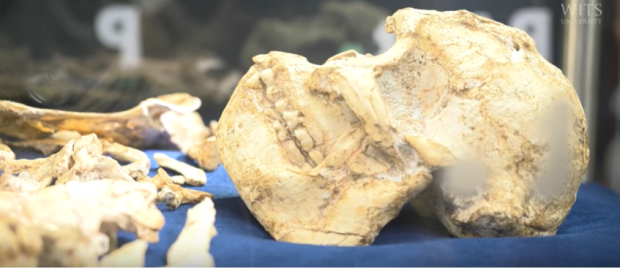
In 1995, a 4-feet tall skeleton was discovered by researchers Ron Clarke and Philip Tobias from the University of Witwatersrand. The archaeologist named their discovery "Little Foot" because of its small structure, and experts have been studying Little Foot for years, trying to learn everything about our ancient ancestors.
According to their findings, Little Foot fell about 30 feet down into a shaft of a cave and it happened 3.67 million years ago. The ancient human represents the most complete Australopithecus skeleton and its the main subject of the study about our chimpanzee-like ancestors. The study is published in the journal Scientific Reports.
The discovery
Little Foot was likely just four feet tall. Experts said that she slept in trees in order to remain safe from predators during her time, like saber-toothed cats. There is also a possibility that she was a vegetarian who ate plants. Her hands and massive toe indicates that she climbs often.
On March 20, the researchers who are studying Little Foot's skeleton just learned something new about the ancient human. Experts shared that she was capable of different head movements, movements that modern humans can't do. This could be the result of her spending time in trees and climbing. Modern humans have lost those abilities since we've invented items for our convenience. Little Foot's topmost cervical vertebrae between her head and her neck showed that she can do special movements.
Amélie Beaudet, study author, and researcher at the University of the Witwatersrand in Johannesburg, South Africa, pointed out the blood flow to her brain through her vertebral arteries. There are facets on her head, first vertebra and second vertebra that allowed for articulation and they are more concave for the ancient human than for the modern human. This controlled how the head moves around.
According to Beaudet, the features were useful for Australopithecus when climbing trees. Little Foot's structure was similar to modern chimpanzees, as chimpanzees spend 8 or 9 hours a day in trees, and ancient humans did the same. Beaudet added "The low investment of energy into the brain of Australopithecus could be tentatively explained by a relatively small brain of the specimen, a low-quality diet [low proportion of animal products] or high costs of other aspects of the biology of Australopithecus [such as upright walking], in any case, this might suggest that the human brain's vascular system emerged much later in our history"
Who was Little Foot?
Little Foot was discovered in 1995 by two archaeologists from the University of Witwatersrand named Ron Clarke and Philip Tobias. Little Foot's skeleton was discovered embedded in sediment in Sterkfontein Cave, South Africa. It took Ron Clarke and his team 20 years before they were able to unearth it since it's been in the cave for millions of years.
There were also other fossils found in South Africa over the past few decades, which is why it is nicknamed the "cradle of humankind" as it gives scientists and archaeologists the materials and evidence that they need to study the evolution of humans.
ALSO READ: Living in Filth: Family in Kazakhstan Collects 1,300 Gallons of Urine

 Share on Facebook
Share on Facebook





















